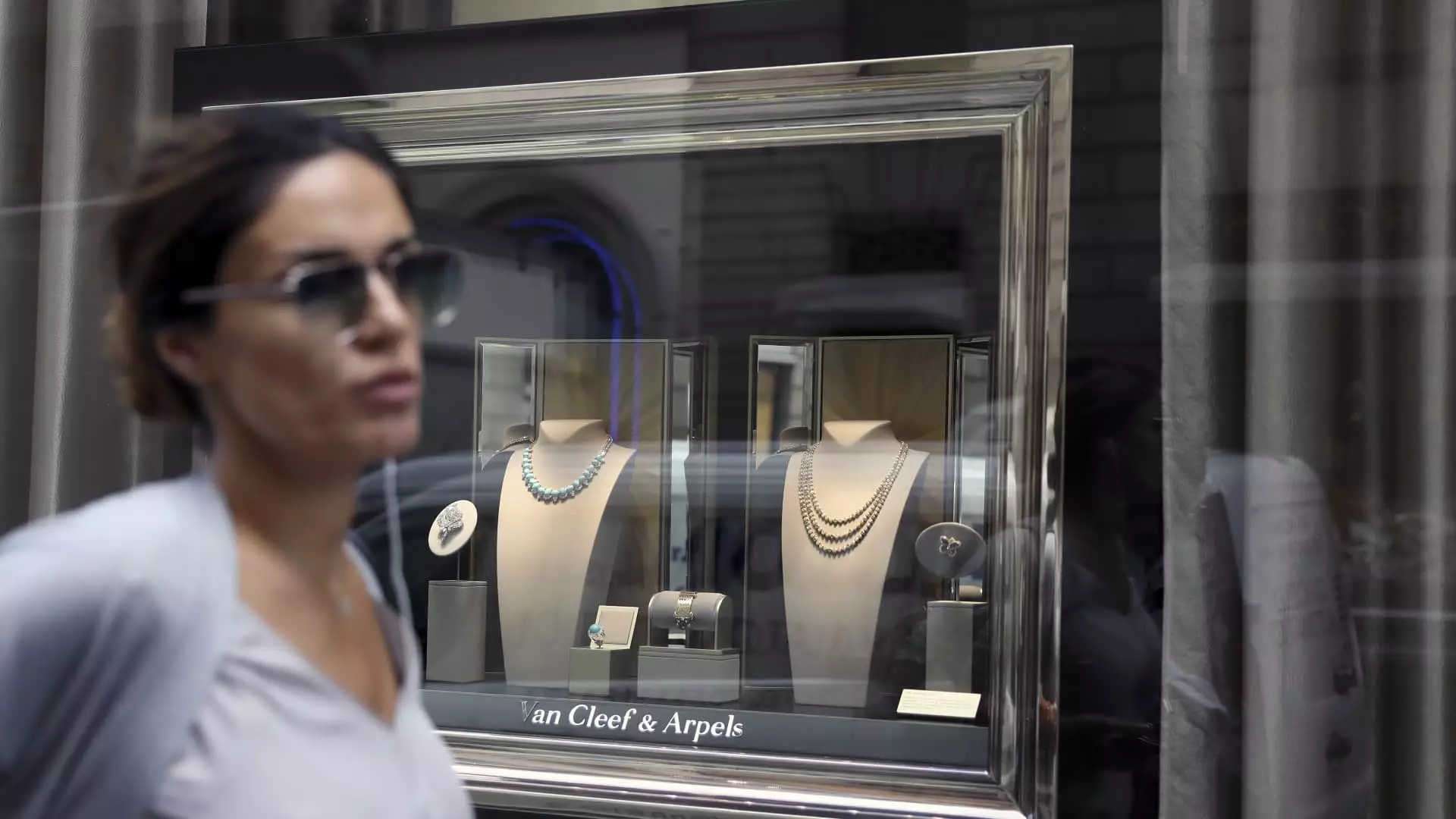In an age where economic uncertainty reigns and consumer confidence fluctuates like the stock market, the glittering allure of luxury jewelry shines resiliently in the hands of the wealthy elite. As broader luxury retail experiences a pullback, the super-rich continue unabashedly to showcase their opulence through exquisite pieces adorned with gemstones that speak of exclusivity and craftsmanship. Yet, this behavior raises critical questions: What does this obsession with luxury signify in a reality marked by stark financial disparity? Furthermore, how does this spark a narrative surrounding the socio-economic implications of such extravagant spending?
Amid the backdrop of a slow recovery in the luxury sector, Swiss luxury group Richemont emerges as a beacon of hope. With brands like Van Cleef & Arpels and Cartier under its belt, Richemont demonstrates that in a world where consumer preferences are shifting, the demand for finely crafted jewelry remains unwavering. Luca Solca, a prominent voice within the global luxury goods arena, underlined that Richemont’s offerings are “really at the top of consumer desirability.” But this success story is not without its complications; it places Richemont in a landscape where economic challenges loom.
The Jewel of Market Share Growth
Richemont’s recent fiscal performance tells a vivid tale of triumph against adversity. Reporting an astounding 11% growth in its Jewelry Maisons segment for the fourth quarter, the company stands out as one of the few sectors delivering positive results in a luxury market reeling from a slowdown in sales among giants like LVMH and Kering. The tenacity of jewelry sales is indicative of an evolving consumer base; people may be tightening their purse strings on clothing and experiences, but luxury adornments continue to attract investment. This portrayal of jewelry as a safer, more sensible luxury asset compared to high-priced handbags might be an emerging trend worth noting.
The issue, however, transcends simple numbers and growth percentages. It compels a close examination of consumer behavior: Are we witnessing a shift toward materialism? Is this obsession a reflection of a deeper societal desire for affirmation through wealth display, especially in turbulent times? This fixation on jewelry, while it provides employment and economic activity, raises ethical questions about fidelity to social responsibility within the luxury sector.
Luxury Watch Sales: A Contrasting Reality
Even as Richemont basks in its jewelry successes, a darker shadow looms over another significant segment: its Specialist Watchmakers division. A staggering 13% drop in watch sales raises eyebrows and questions about the sustainability of luxury goods. The disconnect between the resilient jewelry market and the faltering watch sector reveals critical insights about consumer investment behavior—while people may purchase jewelry as an expression of status and taste, watches seem to hold a more complex place in the luxury hierarchy.
As Solca pointed out, the post-COVID-19 market for watches is still grappling with a saturation of supply, which could deflate the luxury watch bubble. The private nature of many upscale watch brands adds to the ambiguity surrounding this segment, making it difficult for investors and analysts to gauge the true health of the market. Amid this jumble, what does the stall in watch sales suggest about consumer priorities? Perhaps it implies that while jewelry is a frequent indulgence, watches are often seen as long-term investments that consumers are currently less willing to make.
Navigating Economic Winds of Change
The conundrum faced by Richemont—or any luxury brand, for that matter—boils down to economic variables: the fluctuating Swiss franc, increasing gold prices, and tariff implications are all factors that could threaten their market hold. In a climate where mass affluent consumers are increasingly cautious, the ability to sustain growth while navigating these headwinds becomes paramount. It is fascinating to observe how Richemont’s willingness to resist unsustainable price hikes puts them at a potential advantage against competitors who feel compelled to raise prices.
Yet, as analysts warn, the choppy waters of the global economy remain a looming threat. Despite the luxurious shine of jewelry, it is crucial to remain cognizant of the broader implications of elite consumption patterns. The disparity between the consumption behaviors of the wealthy and the rest of society sheds light on ingrained socio-economic divides. As Richemont capitalizes on this unique position within the sector, one has to wonder about their corporate responsibility in pushing back against the tide of conspicuous consumption.
With China’s economic recovery being another variable in this equation, the question arises: Can luxury brands, including Richemont, maintain their momentum without alienating broader consumer bases in a world growing increasingly concerned about inequality? The luxury jewelry market may be thriving, but the societal implications of that success deserve vigilance and critique in these uncertain times.

